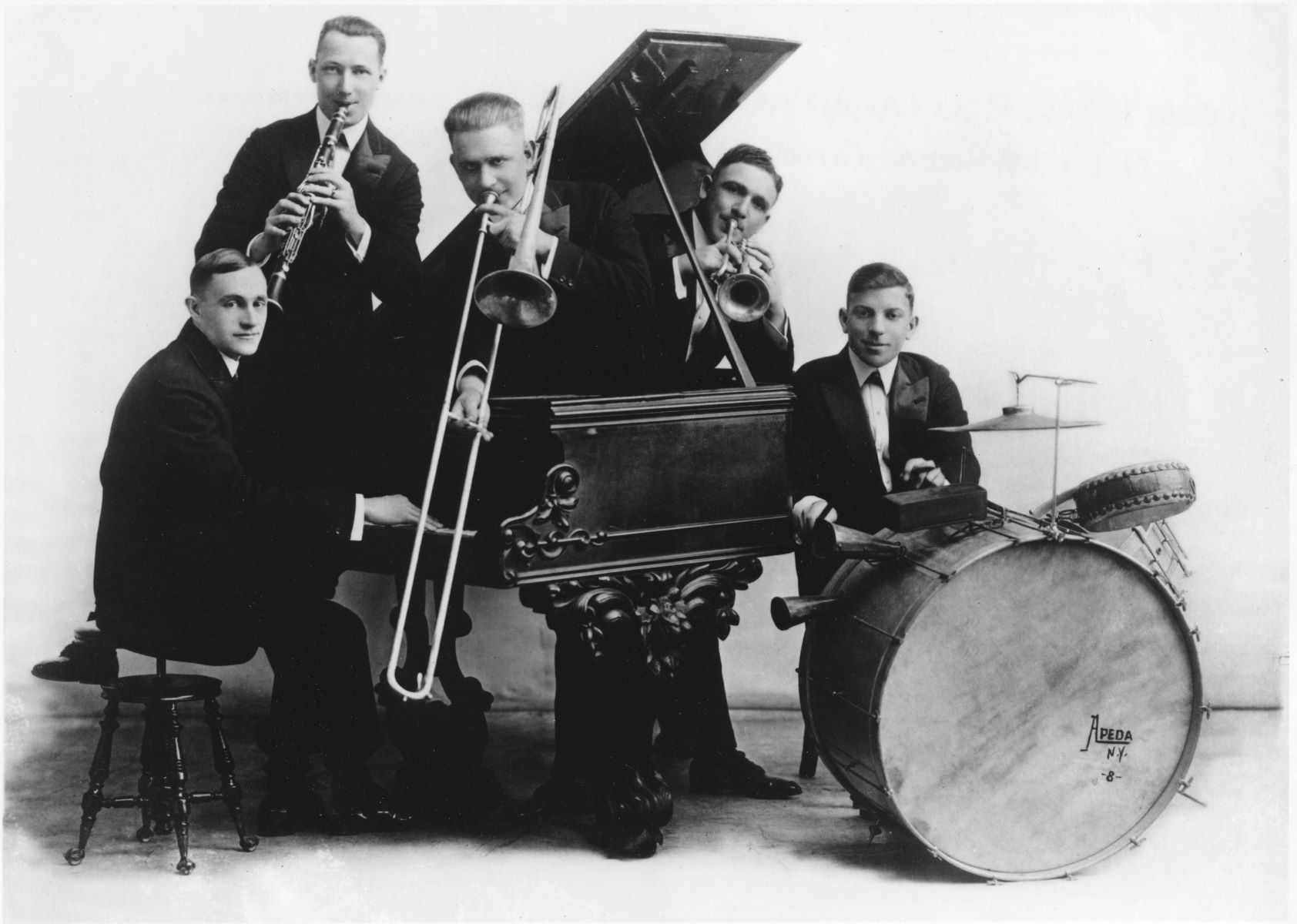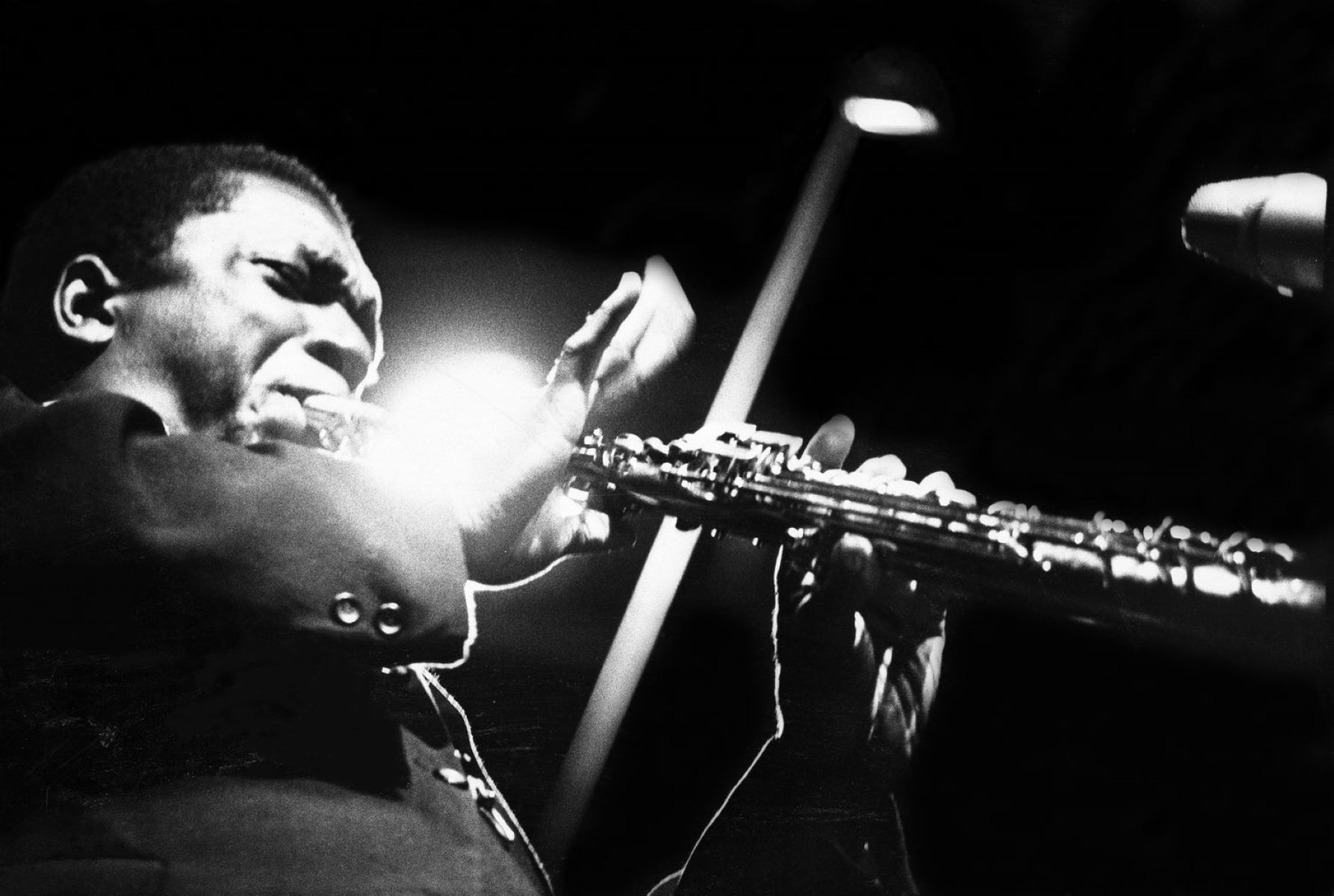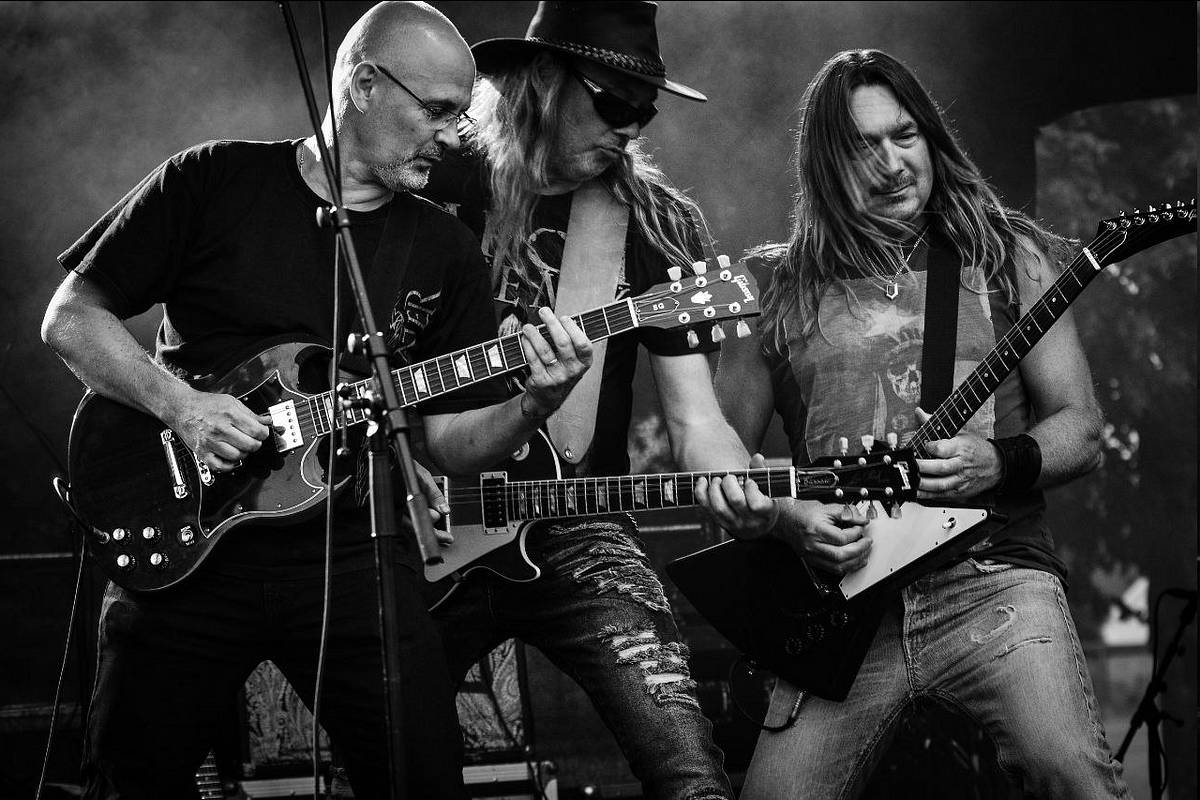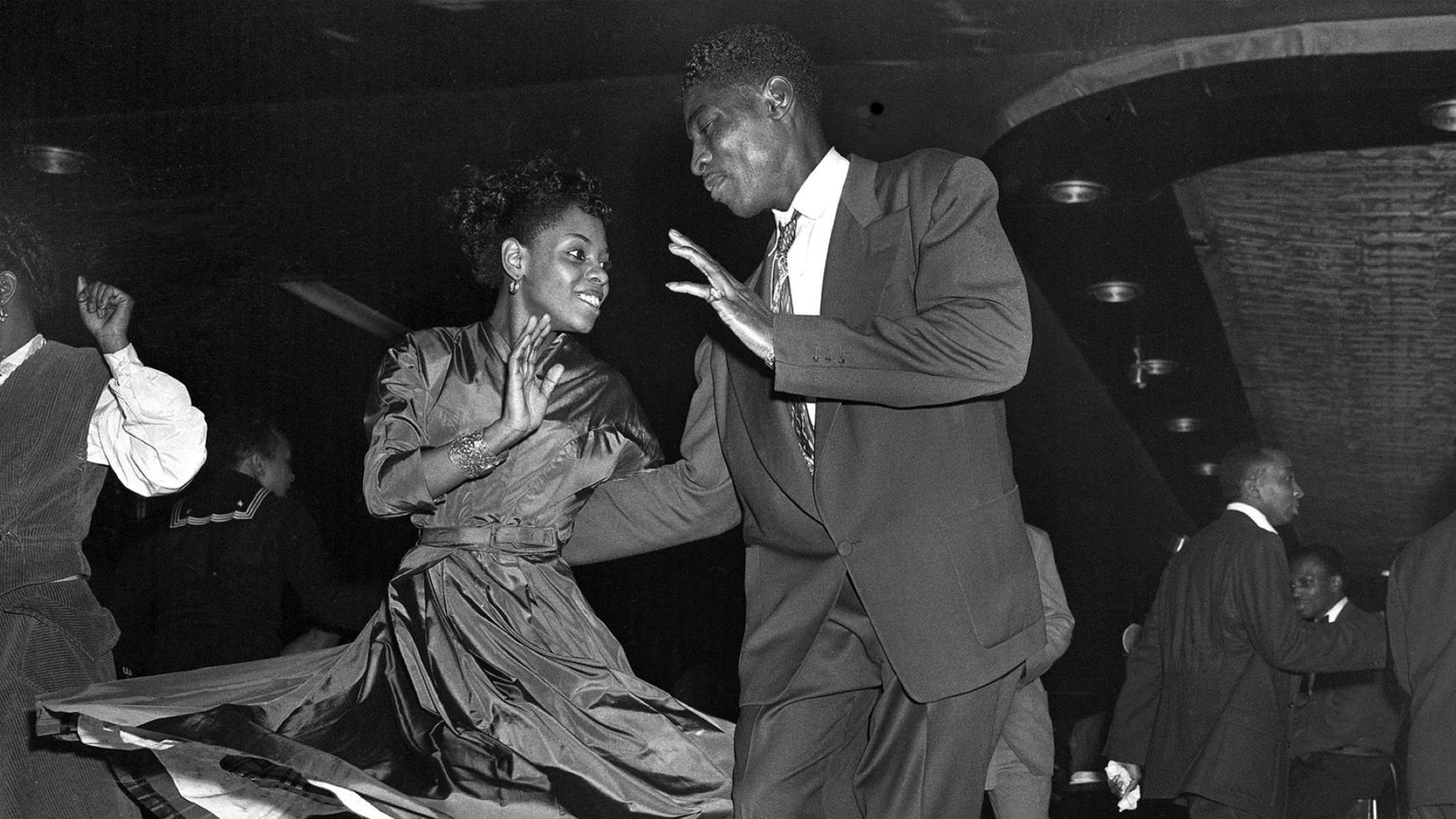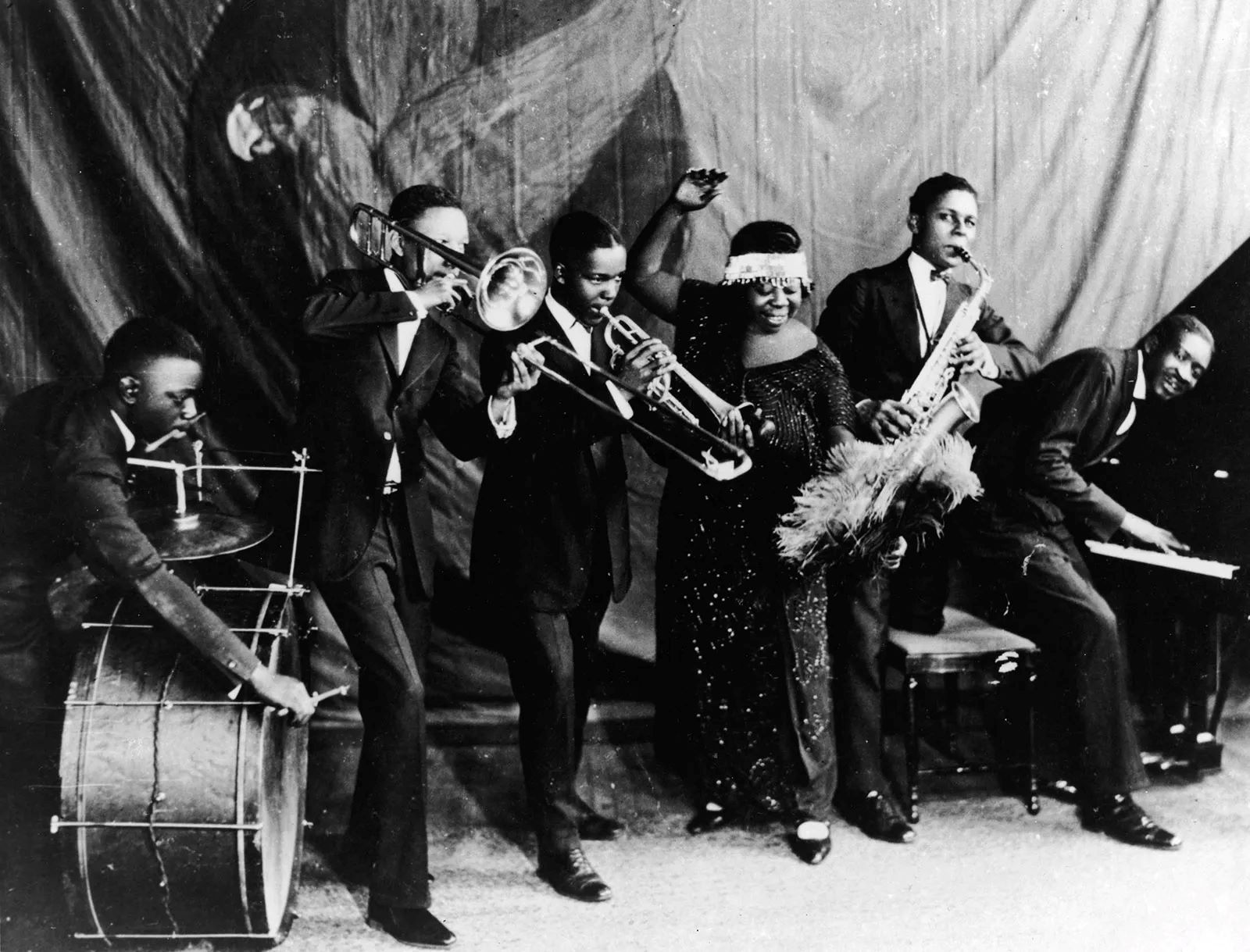

Jazz
How Did Jazz Music Affect Society
Modified: February 18, 2024
Discover the impact of jazz music on society throughout history and explore how this influential genre shaped cultural movements and societal perspectives.
(Many of the links in this article redirect to a specific reviewed product. Your purchase of these products through affiliate links helps to generate commission for AudioLover.com, at no extra cost. Learn more)
Table of Contents
Introduction
Jazz music, born out of the African American experience in the early 20th century, occupies a unique and influential place in the realm of music. With its rhythmic complexity, improvisation, and syncopated melodies, jazz has captivated audiences worldwide and left an indelible mark on society. From its humble origins in the streets of New Orleans to its widespread popularity today, jazz has been a driving force of cultural, social, and even political change.
As we explore the impact of jazz music on society, we will delve into its origins, the evolution of different jazz genres, and its connection to social movements. We will also examine how jazz has played a significant role in breaking down racial barriers, challenging gender roles, and becoming a form of expression and empowerment for marginalized communities. Additionally, we will discuss the influence of jazz on popular culture and its role in shaping music education.
Jazz has the power to transcend boundaries, bringing people together and fostering a sense of unity and understanding. Its improvisational nature allows for personal expression, and its rhythmic complexity creates a vibrant energy that resonates with listeners. Through this article, we will uncover the profound ways in which jazz music has influenced and transformed society, highlighting its enduring legacy and cultural significance.
Origins of Jazz Music
Jazz music emerged in the late 19th and early 20th centuries, primarily rooted in the African American communities of New Orleans, Louisiana. It is a melting pot of various musical influences, fusing elements from African rhythms, European harmonies, and the blues. The unique blend of these musical traditions birthed a new genre that would revolutionize the world of music.
The origins of jazz can be traced back to the vibrant multicultural atmosphere of New Orleans. The city’s diverse population, including African Americans, Creoles, and European immigrants, played a crucial role in shaping the sound of jazz. Musicians from different cultural backgrounds came together in venues such as brothels, dance halls, and street parades, sharing their musical knowledge and blending their styles to create a distinct musical language.
One of the key factors that contributed to the development of jazz was the improvisational nature of African musical traditions. African slaves brought their rhythmic sensibilities and improvisational techniques to the music they played, which became an integral part of the early jazz sound. This improvisation allowed musicians to express their emotions and creativity through their instrument, creating a dynamic and ever-changing musical landscape.
Another significant influence on jazz music was the blues. The blues, with its expressive lyrics and soulful melodies, provided a foundation for jazz musicians to explore and expand upon. The incorporation of blues elements into jazz brought a deeper emotional depth and personal storytelling to the genre.
Early jazz musicians, such as Louis Armstrong, Jelly Roll Morton, and King Oliver, played a pivotal role in popularizing the genre and taking it beyond the confines of New Orleans. They traveled extensively, spreading the sounds of jazz to cities across the United States and even internationally. This helped to establish jazz as a uniquely American art form and a representation of the cultural diversity of the country.
Overall, the origins of jazz music can be attributed to the rich cultural tapestry of New Orleans, the blending of diverse musical traditions, and the improvisational spirit inherited from African musical heritage. These foundations would lay the groundwork for the immense impact and influence that jazz would have on society in the years to come.
The Evolution of Jazz Genres
Throughout its history, jazz music has undergone a remarkable evolution, giving rise to a variety of distinct genres and sub-genres. As the genre spread across different regions and generations, it absorbed new influences and underwent transformative changes. This section will explore some of the key milestones in the evolution of jazz genres.
1. New Orleans Jazz: Also known as Dixieland jazz, this was the earliest form of jazz that emerged in New Orleans in the early 20th century. With its syncopated rhythms, collective improvisation, and lively brass instrumentation, New Orleans jazz laid the foundation for the genre. It featured prominent musicians such as Louis Armstrong, Sidney Bechet, and Jelly Roll Morton.
2. Swing: The swing era, which flourished in the 1930s and 1940s, introduced a more polished and sophisticated sound to jazz. Characterized by its swinging feel, big bands, and danceable melodies, swing gained immense popularity among both black and white audiences. Iconic bandleaders like Duke Ellington, Count Basie, and Benny Goodman became synonymous with this era.
3. Bebop: Bebop emerged in the 1940s as a reaction against the commercialization and simplification of swing. It featured complex harmonies, rapid tempos, and intricate improvisation. Bebop musicians, including Charlie Parker, Dizzy Gillespie, and Thelonious Monk, pushed the boundaries of jazz and emphasized individual virtuosity.
4. Cool Jazz: Cool jazz, also known as West Coast jazz, developed in the 1950s as a more laid-back and relaxed style. It featured lighter textures, slower tempos, and a focus on intricate arrangements and melodic improvisation. Musicians like Miles Davis, Dave Brubeck, and Stan Getz played a significant role in popularizing this sub-genre.
5. Hard Bop: Hard bop emerged in the 1950s as a response to the influence of rhythm and blues and gospel music. It combined the elements of bebop with a stronger emphasis on rhythm and groove. Artists like Art Blakey, Horace Silver, and Clifford Brown were at the forefront of this movement.
6. Fusion: Fusion jazz, which gained prominence in the 1970s, blended jazz with elements of rock, funk, and electronic music. Musicians like Miles Davis, Herbie Hancock, and Weather Report experimented with electric instruments, synthesizers, and complex rhythmic structures, pushing the boundaries of jazz even further.
7. Contemporary Jazz: Contemporary jazz encompasses a wide range of styles and influences, reflecting the diversity and innovation within the genre today. It incorporates elements from various genres such as Latin jazz, world music, and hip-hop, and showcases the creative explorations of modern jazz artists like Kamasi Washington, Robert Glasper, and Esperanza Spalding.
The evolution of jazz genres highlights the genre’s ability to adapt, grow, and incorporate new influences while staying true to its improvisational roots. Each sub-genre represents a unique era and artistic vision, contributing to the rich tapestry of jazz music and its lasting impact on society.
Jazz and Social Movements
Jazz music has historically been intertwined with various social and political movements, serving as a powerful tool for social commentary and cultural expression. From the civil rights movement to anti-war protests, jazz played a significant role in uniting communities, spreading messages of equality, and challenging the status quo.
Civil Rights Movement: During the 1950s and 1960s, jazz became a symbol of resistance and equality during the civil rights movement. Musicians like Nina Simone and Abbey Lincoln used their art to convey messages of racial justice and empowerment. Jazz venues often became safe havens for African Americans, providing spaces where they could freely express themselves and discuss social issues.
Anti-War Protests: In the 1960s and 1970s, as opposition to the Vietnam War grew, jazz musicians became vocal advocates for peace and anti-war sentiments. Songs like “What’s Going On” by Marvin Gaye and “Freedom Jazz Dance” by Eddie Harris served as anthems for the anti-war movement, evoking feelings of protest and defiance.
Free Jazz and Avant-Garde: The free jazz and avant-garde movements of the 1960s and 1970s challenged traditional jazz norms and pushed boundaries both musically and socially. Artists such as Ornette Coleman, John Coltrane, and Sun Ra embraced improvisation as a means of breaking free from societal constraints and exploring new artistic possibilities.
Jazz as Cultural Diplomacy: The United States government recognized the power of jazz as a cultural diplomacy tool during the Cold War era. The State Department sent renowned jazz musicians, including Louis Armstrong and Dizzy Gillespie, on international tours to promote democratic values and counteract Soviet propaganda. These jazz ambassadors helped to bridge cultural gaps and foster understanding between nations.
Fusion and Jazz-Rock: In the 1970s, fusion and jazz-rock emerged, reflecting a fusion of musical styles and embracing social change. Artists such as Herbie Hancock and Miles Davis incorporated elements of funk, rock, and soul into their music, creating a sound that resonated with a younger, more diverse audience.
Through its connection to social movements, jazz has been an agent of change, spreading messages of equality, justice, and freedom. It provided a platform for marginalized communities to have their voices heard and played a crucial role in shaping the social and cultural landscape of the time. Today, jazz continues to be a vehicle for social commentary, reminding us of the power of music to inspire and ignite societal transformation.
Jazz and Racial Integration
Jazz music has played a pivotal role in breaking down racial barriers and fostering greater racial integration in society. From its early beginnings in African American communities to its global popularity, jazz has served as a catalyst for bringing people of different races together and promoting understanding and unity.
During the era of racial segregation in the United States, jazz venues provided spaces where racial integration was not only tolerated but celebrated. Jazz clubs became havens where musicians, regardless of their racial background, could collaborate and perform together. This integration on the bandstand paved the way for greater societal acceptance and challenged the racist norms of the time.
One of the most prominent examples of racial integration in jazz was the formation of multiracial bands. Musicians like Benny Goodman, who hired African American musicians such as Teddy Wilson and Lionel Hampton, broke down racial barriers in the music industry. These integrated bands not only produced groundbreaking music but also served as powerful symbols of racial unity and equality.
Additionally, jazz festivals and jam sessions became platforms where musicians of different races and backgrounds could come together, share their musical ideas, and form lasting friendships. These gatherings provided opportunities for cross-cultural collaboration, mutual respect, and the exchange of musical knowledge.
The influence of racial integration in jazz extended beyond the music itself to the audiences. Jazz performances drew diverse crowds who were united by their love for the music, regardless of their racial backgrounds. This communal experience created a sense of shared appreciation and understanding, challenging prevalent racial prejudices.
Furthermore, the international appeal of jazz helped to bridge racial divides on a global scale. Jazz tours and international collaborations allowed musicians to interact with audiences from different cultures and races, promoting cultural exchange and demonstrating the universal language of music.
Ultimately, jazz’s emphasis on collaboration, improvisation, and cultural exchange transformed it into a powerful force for racial integration. It challenged discriminatory practices, brought diverse communities together, and fostered a greater understanding and appreciation of different cultures. Jazz’s legacy as a champion of racial integration continues to inspire and uplift, reminding us of the transformative power of music.
Jazz and Gender Roles
Jazz music has played a significant role in challenging traditional gender roles and providing a space for women to break barriers in the male-dominated music industry. Throughout the history of jazz, women have made invaluable contributions as instrumentalists, vocalists, composers, and bandleaders, defying societal expectations and paving the way for future generations.
During the early years of jazz, women were often confined to the role of vocalists or “girl singers” in big bands. However, a few trailblazing women shattered this mold and emerged as instrumentalists, proving that jazz was not solely a male domain. Pianist and composer Mary Lou Williams, for example, made significant contributions to the development of swing music and became one of the few female bandleaders of her time.
As jazz evolved, more women began to assert themselves as skilled and innovative instrumentalists. Pioneers like pianist Hazel Scott, trombonist Melba Liston, and saxophonist Vi Redd became respected figures in the jazz world, challenging gender stereotypes and paving the way for future generations of female musicians.
In the realm of vocal jazz, women have made indelible contributions as well. Artists such as Billie Holiday, Ella Fitzgerald, and Sarah Vaughan showcased their extraordinary vocal talents, earning critical acclaim and becoming some of the most revered voices in jazz history. Their ability to interpret songs with depth, emotion, and improvisation further expanded the possibilities for women in jazz.
Despite the undeniable talent and contributions of women in jazz, they often faced discrimination and limited opportunities. Many female jazz musicians struggled to gain recognition on a par with their male counterparts and encountered resistance and sexism in the music industry. It was not until later decades that more doors opened for women in jazz, allowing them greater visibility and acceptance.
Today, the legacy of women in jazz continues to thrive. Countless female musicians are making their mark as instrumentalists, composers, arrangers, and bandleaders. Jazz organizations and initiatives, such as the International Women in Jazz, have been established to support and celebrate the achievements of women in the genre.
Through their perseverance and artistic excellence, women in jazz have shattered gender norms, redefined what it means to be a jazz musician, and inspired future generations. Their contributions have paved the way for greater equality and representation in the jazz community, creating a more inclusive and diverse space that embraces talent, regardless of gender.
Jazz as a Form of Expression and Empowerment
Jazz music is not just a genre; it is a powerful form of expression and a means of empowerment. From its early beginnings to the present day, jazz has provided a platform for musicians to express their emotions, challenge societal norms, and find strength in their individuality. It has given a voice to the marginalized, served as a tool of liberation, and empowered artists to push boundaries both musically and socially.
One of the defining features of jazz is its improvisational nature. Improvisation allows musicians to express their unique thoughts and emotions in the moment, creating a deeply personal and authentic form of artistic expression. Jazz musicians use their instruments as vehicles for self-expression, conveying a range of emotions from joy and love to pain and resilience.
Jazz has also been a means of challenging social and cultural norms. Artists like Louis Armstrong, Duke Ellington, and Nina Simone used their music to address social injustices, racism, and inequality. Songs like “Strange Fruit,” performed by Billie Holiday, became powerful anthems that shed light on the horrors of racial violence and injustice.
For marginalized communities, jazz has been a source of empowerment. African Americans, in particular, have found solace and strength in jazz music. It has provided a creative outlet to navigate the complexities of racial identity, celebrate cultural heritage, and confront the challenges they face in society. Jazz has fostered a sense of pride, resilience, and unity within these communities.
Moreover, jazz has empowered individual musicians to challenge the status quo and break free from musical and societal constraints. Artists like Charlie Parker, John Coltrane, and Miles Davis revolutionized the sound of jazz, pushing the boundaries of harmony, rhythm, and improvisation. They fearlessly experimented with new ideas, transforming the genre and inspiring generations to come.
Beyond the boundaries of the music itself, jazz has inspired social change and empowered individuals to take action. It has provided a soundtrack to various social and political movements, encouraging unity, resilience, and the pursuit of justice. Through its power to bring people together and ignite a shared sense of purpose, jazz has galvanized communities and sparked conversations that go far beyond the realm of music.
Jazz’s role as a form of expression and empowerment continues to resonate in modern times. Its ability to convey complex emotions, challenge societal norms, and inspire change remains as relevant today as it was when the genre first emerged. Jazz serves as a testament to the transformative power of music and the enduring impact it can have on individuals and society as a whole.
The Influence of Jazz on Popular Culture
Jazz music has had a profound influence on popular culture, shaping and inspiring various art forms beyond the realm of music. From film and literature to fashion and dance, jazz has left an indelible mark on popular culture, enhancing creativity, fostering innovation, and captivating audiences worldwide.
Film has been greatly influenced by jazz, with its distinctive rhythms and improvisational nature. Jazz music has served as a powerful backdrop to enhance the mood and storytelling in films. From the film noir classics of the 1940s to contemporary movies, jazz soundtracks have added depth, intrigue, and a touch of sophistication to cinematic experiences. The improvisational nature of jazz mirrors the spontaneity and unpredictability of life, making it an ideal musical choice for capturing human emotions on the big screen.
Literature has often drawn inspiration from the world of jazz as well. Writers, such as Langston Hughes, Ralph Ellison, and Jack Kerouac, incorporated jazz rhythms and themes into their works, reflecting the cultural richness and vibrancy of the genre. The syncopation, improvisation, and poetic storytelling found in jazz music have become a source of inspiration for literary artists across generations.
Jazz has also had a significant impact on fashion and style. From the flamboyant attire of the swing era to the cool, laid-back fashion of the bebop and cool jazz movements, jazz musicians have been trendsetters for generations. Their distinctive looks, such as wide-brimmed hats, sharp suits, and bold accessories, have become iconic symbols of style and individuality.
In the world of dance, jazz has greatly influenced various movements and styles. From the energetic and syncopated movements of the Charleston during the jazz age to the smooth, improvisational techniques in modern jazz dance, the genre has provided a rhythmic foundation and inspiration for countless choreographers and dancers. Jazz and its inherent ability to evoke emotion and movement have allowed for the development of innovative and captivating dance routines.
Furthermore, jazz has permeated the advertising industry, with its catchy melodies and infectious rhythms used to create memorable jingles and commercials. The distinctive sound of jazz has been employed to create advertisements that evoke nostalgia, sophistication, excitement, or a sense of coolness, capturing the attention and imagination of consumers.
The influence of jazz on popular culture extends far beyond these examples, permeating the fabric of society in various ways. Jazz’s spirit of creativity, individuality, and innovation has inspired artists from all walks of life, leading to the emergence of new artistic expressions and cultural movements. It continues to be a source of inspiration for musicians, artists, and enthusiasts worldwide, ensuring that its impact on popular culture will endure for generations to come.
Jazz Education and its Impact on Society
Jazz education has played a crucial role in preserving the legacy of jazz music and its impact on society. By teaching the history, theory, and performance techniques of jazz, it has not only cultivated the next generation of musicians but also fostered a deeper understanding and appreciation for the genre. Jazz education has had a profound impact on society, both culturally and academically.
One of the primary benefits of jazz education is its role in preserving the rich history and heritage of the genre. By studying the roots of jazz and the contributions of iconic musicians, students gain a deeper understanding of the cultural significance of jazz. This knowledge helps to ensure that the legacy of jazz is passed down to future generations, preserving its authenticity and cultural value.
Jazz education also promotes cultural diversity and inclusivity. By celebrating the contributions of African American musicians and exploring the multicultural origins of jazz, it fosters appreciation for diversity and promotes cultural understanding. Jazz classrooms and programs serve as spaces where students from different backgrounds can come together, collaborate, and learn from one another.
Furthermore, jazz education cultivates creativity and critical thinking skills. Jazz is an art form that encourages improvisation, innovation, and problem-solving. Students engaged in jazz education learn to think on their feet, adapt to changing musical situations, and express their unique musical voice. These skills are transferable to various aspects of life, promoting creativity and resourcefulness beyond the realm of music.
Jazz education also enhances academic performance. Research has shown that students involved in music education, including jazz, tend to have higher test scores, improved cognitive skills, and better academic achievement. Learning to play jazz involves complex rhythmic patterns, harmonic structures, and improvisational techniques, which stimulate the brain and enhance intellectual abilities.
Moreover, jazz education fosters teamwork and collaboration. Students involved in jazz ensembles learn to listen attentively, communicate effectively, and work together to create a cohesive musical performance. These skills are vital not only for music-making but also for success in various professional fields where collaboration and teamwork are essential.
Lastly, jazz education has the power to empower and inspire students. It provides a space where individuals can express themselves freely, build self-confidence, and develop a sense of personal identity. Jazz education encourages individuality and self-expression, teaching students to embrace their unique artistic voices and to take risks in their creative endeavors.
Overall, jazz education’s impact on society is profound. By preserving the history and cultural significance of jazz, promoting diversity and inclusivity, fostering creativity and critical thinking, and enhancing academic performance, jazz education enriches individuals and communities. It ensures that the legacy of jazz lives on, and continues to shape and inspire future generations.
Conclusion
Jazz music stands as a cultural, artistic, and social force that has left an indelible mark on society. From its origins in African American communities to its global reach today, jazz has transcended boundaries and influenced various aspects of life, including social movements, racial integration, gender roles, popular culture, and education.
Jazz music emerged from the vibrant cultural milieu of New Orleans, blending African rhythms, European harmonies, and the blues. It has since evolved into numerous genres, each representing a unique era and artistic vision. Jazz has been a powerful form of expression, allowing musicians to convey their emotions and challenge societal norms through improvisation and creativity.
Jazz has been intertwined with social and political movements, serving as a catalyst for change. From the civil rights movement to anti-war protests, jazz musicians used their voices and compositions to advocate for equality and justice. Jazz has empowered marginalized communities, fostered inclusivity, and provided a platform for underrepresented voices to shine.
The influence of jazz on popular culture has been far-reaching. Jazz has inspired films, literature, fashion, and dance, shaping the artistic landscape and captivating audiences worldwide. Jazz’s impact extends beyond entertainment, permeating the world of advertising and enhancing creativity in various art forms.
Jazz education has played a vital role in preserving the genre’s legacy, promoting cultural understanding, and nurturing the next generation of musicians. It has instilled a deeper appreciation for jazz, fostered creativity, and equipped students with valuable skills that extend beyond music.
In conclusion, jazz music has transformed society in profound ways. Its ability to bridge cultural divides, challenge societal norms, and empower individuals has made it a catalyst for social change. From New Orleans to global stages, its rhythms and melodies have resonated with people from all walks of life, leaving an enduring legacy that continues to inspire and captivate. Jazz’s influence on society is a testament to the power of music to transcend boundaries, bring people together, and shape our collective consciousness.



